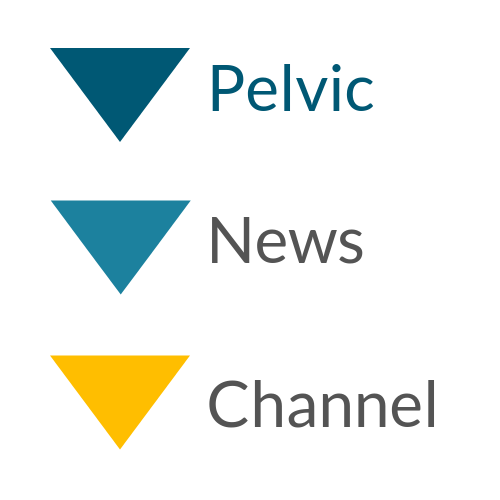Do you know that there is an indication that pelvic floor muscle training (PFMT) has a positive effect on male sexual dysfunction (erectile dysfunction and premature ejaculation)?
Years ago I read the book ‘pelvic floor exercises for erectile dysfunction’ by Grace Dorey. This book describes besides the prevalence, risk factors, anatomy and physiology of normal erectile function, the role of the pelvic floor muscles and a the trial that was performed.
As sound evidence is not based on one trial I was really happy to see that a systematic review on erectile dysfunctions ánd on premature ejaculation was published recently. So I would like to share the results and implications of this systematic review with you.
Both erectile dysfunction (Complaint of inability to achieve and sustain an erection firm enough for satisfactory sexual performance) and premature ejaculation (Complaint of a persistent or recurrent pattern of too rapid achievement of ejaculation during partnered sexual activity, i.e. before the individual wishes it) are highly prevalent symptoms in men.
There are many risk factors that can contribute to these complaints like: vascular, hormonal, neurological and psychological problems. It is also a well-known complication of diabetes mellitus and the use of certain drugs.
The treatment regime generally consists of:
- Lifestyle modifications
- Vacuum devices
- Psychotherapy
- Medication
However, the pelvic floor muscles might also play an important part. The ischiocavernosus muscles help to increase the intracavernous pressure and therefor influence penile rigidity. The bulbocavernosus muscle and levator ani muscles help to propel the semen through the urethra and thus ejaculation by rhythmic contractions.
So if there is an underlying pelvic floor dysfunction, pelvic floor muscle training might be a treatment option.
Method of the systematic review:
Inclusion criteria:
- Quantitative studies up to January 2018
- Reporting on ‘erectile dysfunction’ or ‘premature ejaculation’ with pelvic floor muscle training as treatment
- ≥18 years
Exclusion criteria:
- Neurological conditions
- Previous pelvic or urological surgeries
Main outcome measures were: change in erectile function using the International Index of Erectile Function (IIEF) or a self-reported change in erectile function. Premature ejaculation was measured with the Intravaginal Ejaculatory Latency Time (IELT).
Results:
Of the initial 254 studies found, 10 were included in the review. In total 668 participants with a mean age ranging from 30 to 59 years. Five were on erectile dysfunction and five on premature ejaculation. To study effects of an intervention a randomized controlled trial (RCT) has the highest level of evidence. There was one RCT on erectile dysfunction and one on premature ejaculation. Other study designs were for instance; pre-post studies and a retrospective study.
All but one study on erectile dysfunctions used patient reported outcomes (complete response, partial response, failure/nil response) and only one the IIEF. Change in intracavernous pressure and maximum anal pressure were also measured. For measuring premature ejaculation three studies used the IELT and four patient reported response (cured; improvement, failure/nil response).
The studies on erectile dysfunction used the same intensity of pelvic floor muscle contractions. Some used biofeedback and/or electrical stimulation in addition. Number of sessions varied greatly between five and 20 sessions in about a three to four month period. All trials incorporated home- exercises. Reported cure rates ranged between 35% and 47%.
All studies on premature ejaculation included electrical stimulation with pelvic floor muscle training. Some added biofeedback as well. Twelve to twenty sessions in a four week to three month period were given. In only one trial men had to perform home-exercises. Cure rates (post-phoning of ejaculation) were between 55% and 83%. Three studies reported on a significant increase in IELTS.
My opinion:
The results of pelvic floor muscle training for men with erectile dysfunction and premature ejaculation are definitely promising. However due to the study designs and heterogeneity of the population and intervention we should be cautious to make too bold statements regarding the effects. Properly executed RCT’s on efficacy of PFMT with/without biofeedback and/or electrical stimulation for patients with erectile dysfunction and premature ejaculation are warranted.
I would also recommend a proper investigation of the pelvic floor muscles. This is necessary before you start treatment because otherwise you don’t know what you are treating. As mentioned in a previous blog-important issues it is also very important to report training schedules, settings for electrical stimulation etc. properly.
As erectile dysfunction and premature ejaculation can have causes that cannot be influenced with pelvic floor muscle training it is also important to have good patient selection. If pathology is ruled out, conservative treatment with pelvic floor muscle training might be a good first-line treatment option.
For those of you who want to know the specifics of this systematic review please read the full text article.
REFERENCE:
Myers C, Smith M, Pelvic floor muscle training improves erectile dysfunction and premature ejaculation: a systematic review. Physiotherapy. 2019 Jun;105(2):235-243. doi: 10.1016/j.physio.2019.01.002. Epub 2019 Jan 14.









Awesome post thanks for sharing a lot of good information
I’m impressed, I have to admit. Rarely do I encounter a blog that’s both equally educative and entertaining, and
without a doubt, you have hit the nail on the head.
The issue is something not enough people are speaking intelligently about.
I’m very happy that I stumbled across this in my search for something concerning this.